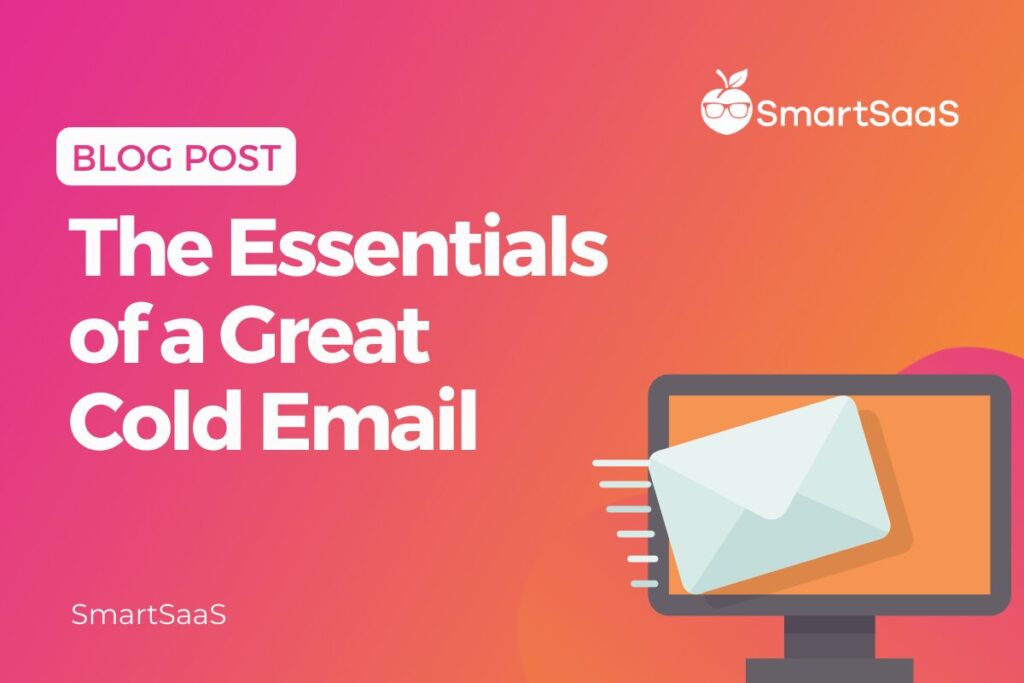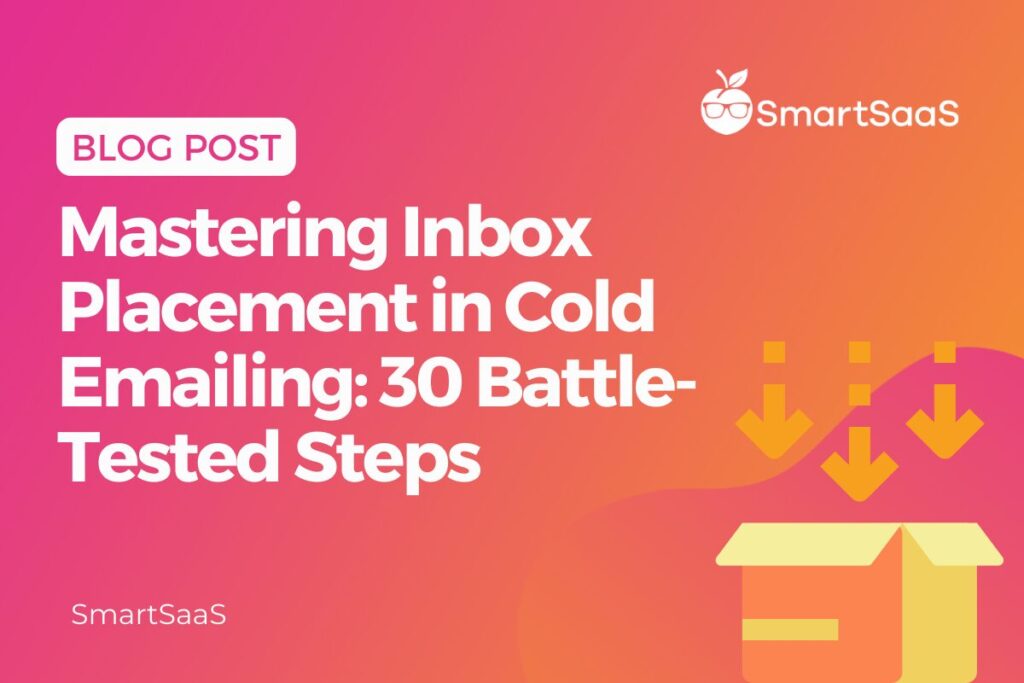The Essentials of a Great Cold Email

On average, people handle about 121 emails daily. Most of these are probably routine notices, updates, or promotional messages from various businesses. However, occasionally, there’s an email that distinguishes itself in our cluttered inboxes. But what are the key ingredients an outstanding email?
A Standout Subject Line
When you send an email, it’s important to start off on the right foot. A well-crafted subject line will secure the recipient’s interest from the time your email hits their inbox. This is important because it encourages them to read the rest of the email and potentially take action. It sets the stage for the rest of the email, and effectively introduces the main points.
The best way to achieve all of these goals is to start by arousing curiosity and asking a question. If you can answer that question in a way that intrigues your reader, they are more likely to want to know more. After all, if the subject line has hooked them, the rest of the email should be just as compelling.
So they opened your email because of your subject line that stood out in their inbox, what now? Don’t lose them in the first few seconds of opening your message, make sure to have this next.
A Great Opening Line
An email opening line is the first few words or sentences in an email. The opening sentence sets the tone for the rest of the email. It establishes the relationship you have with the audience. It should reflect the kind of communication you’re hoping to achieve.
For example, if you are writing to a client, you might start the email with a few words of reassurance or appreciation. If you’re writing to a C-suite leader, you might start the email with a call to action.
Some good opening lines for emails to multiple recipients include addressing them all by name, providing a brief update, or asking a question. Remember to use a friendly opening line to make the recipients feel comfortable. So, when you’re thinking of what to write in your next email, think about what will catch the recipient’s eye and get them excited to read your message. Don’t forget that on most email clients, you can see a preview of the opening line.
A Brief Introduction–of yourself and the company
No one likes receiving random messages from people they don’t know, so make sure to let your prospects know who you are and where you’re coming from. Here’s our formula for introducing yourself and your brand in a sales email.
First and foremost, share your name, your position, and the company you’re representing. This should be followed by an explanation of what you can do for them in one sentence by describing your business offer–what you do, how you do it, and the results they can from working with you. Lay down all the facts in one swift introduction.
In addition, make sure your email signature includes your full name, title, and contact information. This will help the recipient put a face to the name and know how to get in touch with you if they need to.
A tip from us, having an email signature can actually increase deliverability and response rate!
Share Your Intention–get to the point
When it comes to sales outreach, being clear with your intention is key. If your intention isn’t clear, you’re likely to lose the sale.
There are a few things you can do to make sure your intention is clear in a sales email. First, start by stating what you want upfront. Be explicit about what you want the reader to do or how you can help them. By being clear about your intentions, you’ll increase the likelihood that your email will be read and acted on.
If you’re looking for a meeting, say so.
If you’re looking to make a sale, say so.
This may seem like common sense, but too often sales emails are full of fluff and no substance.
Then be specific about what you’re offering and why it’s valuable. This may seem like another common sense, but too often sales emails are vague and fail to articulate the value of what’s being offered.
Finally, don’t be afraid to be direct.
Call to Action
When you are writing a sales email, one of the most important elements is the call to action or CTA. Probably, the entire point of your message is to get your prospect to take action. Not having a CTA in your sales email is like bringing a water bottle without water in it – it loses its purpose.
Something as simple as a CTA, may it be a link or a button in your email, can immensely transform your cold email outreach. Your call to action should be clear. You should only ask for one thing, and that thing should be easy to do. If the prospect does it, you have a good chance of success in converting your lead to a sale.
A tip from us: Turn your Call to Action into a quick-to-identify and easy-to-do instruction by using a CTA Button. This can increase your click-through rate by making it clear to the reader what they should do next. Need more convincing? A CTA button can increase the click-through rate by 28% over a link-based CTA.
It’s personalized–as if you’re not using a template
We won’t tell your secret that you’re using our 30+ Best First Emails to Send in Cold Outreach Email Templates, but make sure to personalize it the way you and your client need it!
One way to increase your campaign’s open rate is to find ways to personalize your messages for each recipient. For example, you might write a message specifically for someone who frequently responds to your updates and provides valuable feedback.
It Uses the Right Tone–confidence never go wrong
When it comes to sales outreach emails, it’s important to use the correct tone of voice towards the type of person you are talking to. You want to come across as someone who knows what they’re talking about and is worth doing business. This will be different for different people holding different positions, and even in different industries. Seeming too friendly or overly excited in an email greeting by using a fun greeting, smiley face, or exclamation points may be a quick turn-off for some, while on the other hand, you don’t want to sound like you’re trying too hard or that you’re not interested in what the recipient has to say.
The best way to strike the right balance is to keep your language respectful and courteous while also being concise and direct, be confident in your messaging and in your offer, convincing them that this is what they need. Get to the point quickly and clearly explain why you’re emailing in the first place–remember, state your intention clearly! This exudes confidence, making it easier for them to believe what you say. If you can do this without sounding like you’re reading from a script, all the better!
Most importantly, remember that sales outreach emails are all about building relationships. The goal of sending an email is to communicate with someone that means business, so keep your message respectful and objective. And remember to use proper grammar, spelling, and punctuation when writing an email.
No grammatical or typographical error found
This first step in building trust can be easily undermined by simple grammatical and typographical errors. Make sure to proofread your sales email thoroughly before hitting send, in order to avoid coming across as unprofessional. Spellcheck software can help you catch mistakes, but it’s always best to double-check to be certain.
There are a few easy ways to ensure that your email is free of errors. First, read your email out loud – this will help you catch any awkward phrasing or typos. Then, use a grammar checker like Grammarly or Hemingway Editor. Finally, have someone else read over the email before you send it off.
With just a little extra effort, you can make sure that your sales email is polished and error-free. This will help create a positive first impression with potential customers and set the stage for a successful relationship.
To Wrap Up
Typically, the open rate for your email campaigns stands at 11% (10 out of 90 emails delivered are opened). While this figure may initially appear modest, it’s crucial to remember that certain individuals are more inclined to open your emails than others.
To sum up, adhering to these straightforward guidelines in crafting a cold email for sales purposes can significantly enhance the effectiveness of your message and boost your conversion prospects. Compose an impactful cold email by creating an engaging opening, clearly stating your purpose, incorporating a call-to-action, choosing an appropriate tone, and avoiding mistakes. Moreover, don’t hesitate to follow up – persistence plays a vital role in sales success.






Responses